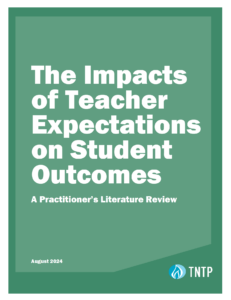A lot has changed since the publication of The Widget Effect, our 2009 study of the failures of the nation’s teacher evaluation systems. In the past four years, the number of states that require annual teacher evaluations has nearly doubled, from 15 to 28. All but 10 states now require that student achievement results be a factor in evaluations. All but seven have abandoned binary “satisfactory / unsatisfactory” ratings in favor of more rating options. And the number of states in which teachers must show evidence that they are effective in order to earn tenure has rocketed from zero to 20.
This sea change in policy is thoroughly documented in the National Council on Teacher Quality’s excellent new State of the States report, Connect the Dots, which we strongly recommend checking out. Even we were surprised by how many states have taken action to improve evaluations. The real story of the report, however, is not how far we’ve come, but how far we still have to go.
The truth is, we haven’t even reached the halfway point. Only nine states and Washington, D.C. are more than a year into implementation. Some states are not slated to begin full implementation of their new policies for another five years. As NCTQ rightly notes, better policies are just the start: “Moving from a system that rates everyone as just fine to one that differentiates performance is daunting and requires a culture shift, and data from early implementers show just how hard it is.”
That’s the real challenge: not just rewriting laws, creating new tools, or revising evaluation models (which NCTQ notes most states and districts have the flexibility to do), but ensuring they’re used effectively and persisting through the turmoil of change, including efforts by opponents of reform to bog down the whole process. The work of implementation is not sexy and generally doesn’t draw headlines (except when things go wrong), but it’s the make-or-break factor. States pursuing these changes would do well to review NCTQ’s assessment and their own implementation plans, and ensure they’re on the “making it” trajectory, not the breaking one.








